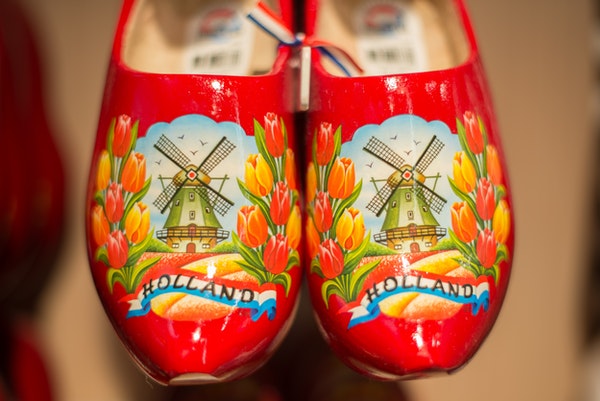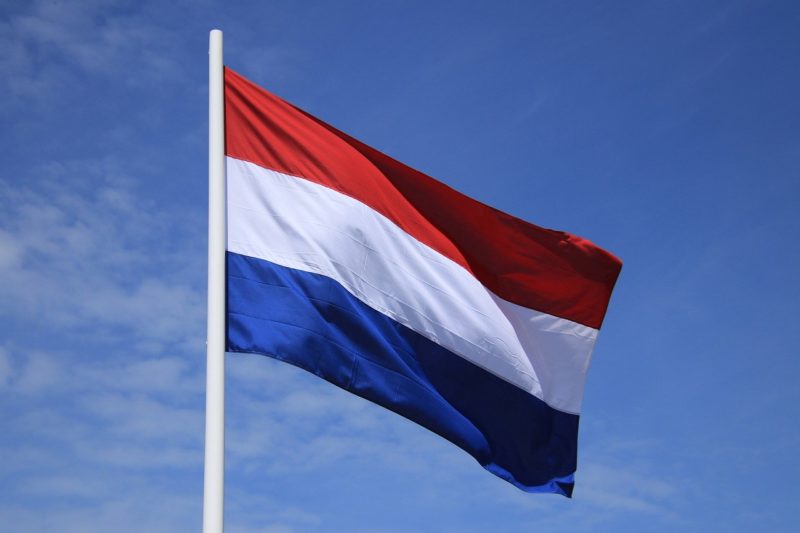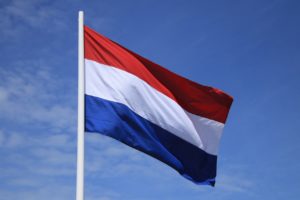Dutch Is an Awesome Language
Everybody thinks of beautiful canals and tulip fields when they think of the Netherlands. But, this country’s most unique feature is the language the locals speak there. Dutch is a fascinating language with a lot of potentials. Learning it could benefit you immensely. To motivate you a bit, here are some key facts about the language of the Netherlands. Discover the history, grammar, and current uses of the Dutch language here.
Basic Facts About the Dutch Language
There are 28 million Dutch speakers worldwide. It’s most common in the Netherlands, where 16 million people speak it. Dutch is also very common in Belgium, France, Suriname, Aruba, Curacao, and Sint Maarten.
Dutch is a West Germanic language. This means that it’s closely related to English and German. In fact, its similarity to English makes it one of the easiest foreign languages to learn.
How Similar Is Dutch to Afrikaans?
Afrikaans is a language spoken in South Africa. Its roots originate from the Dutch spoken by conquerors. Today, the two languages are still very similar. They’re mostly mutually intelligible, although there’s a significant difference in vocabulary and pronunciation.

History of the Dutch Language
Dutch has a fascinating and rich history that involves different lands and events in Europe. But, the history of the Dutch language definitely holds a lot of surprises. Mainly in how unaffected it was compared to how other Germanic languages evolved. Find out how Old and Middle Dutch compare to the language it is today.
Old Dutch
Like all Germanic languages, Dutch developed from Proto-Germanic roots. In 500 BCE, this language was spoken in what is currently Germany, Denmark, and Scandinavia. By 200 CE, the Proto-Germanic diverged into different dialects, and the Western dialect was Dutch’s ancestor.
Regional differences emerged (which is the separation of German, English, and Frisian), but these languages were mostly intelligible until the 8th century. While pronunciation changes in Old Germanic separated the languages, Old Dutch (also known as Old Franconian) wasn’t affected by these changes. It remained relatively the same throughout this period.
Middle Dutch
Middle Dutch was the period between 1150 and 1500 in the language’s history. One interesting aspect of this period was the richness in literature. A lot of famous Dutch literary work was created in this period that’s still studied by pupils in the Netherlands.
Interestingly, if you try to read Middle Dutch, you’ll have a relatively easy time as the language hasn’t changed that much since.
Modern Dutch
This period begins at the Standardization of Dutch in 1477. The two most important dialects of the time were from Flanders and Brabant. The Antwerp dialect, which lied geographically between the two, became the most influential when a Standard Dutch was coined.
In 1637, the first Dutch Bible was published. This translation was a major event in the language’s history. Everyone could read and understand this Bible, and this brought the standardization movement in the Netherlands.
Meanwhile, the Flemish Flanders was much more influenced by France and the French language. The standardization of Dutch in Flanders didn’t take place until the 19th century.
Today, Belgium and the Netherlands both have Dutch as an official language. But, they speak different dialects and accents, even though the Standard Dutch still exists. In Belgium, Dutch is called Flemish. But, this is the same language as Dutch.

Dutch Dialects and Regional Languages
There are dialects of Dutch, as with most languages. But, there are also other languages in the region which are closely related to, but not quite the same as the Dutch language.
- Frisian: spoken in the Northern province of Friesland in the Netherlands
- Low Saxon: spoken in the Northeastern part of the Netherlands
- Limburgish: spoken in Southeastern Netherlands and Northeastern Belgium
What Is Dutch Like?
A lot of people say Dutch sounds like a drunk Englishman trying to speak German. While that’s of course not true, there’s definitely a lot of similarities between English and Dutch. Although it’s important to note that the two aren’t mutually intelligible.
There are a lot of cognates between Dutch and English, and the grammar is very similar too. Cognates are words that sound very similar and have the same meaning. Some common cognates between English and Dutch are:
English word |
Dutch cognate |
day |
dag |
water |
water |
world |
wereld |
two |
twee |
no |
nee |
There are a lot more cognates and vocabulary from the same root in English, Dutch, and German.

The Dutch Alphabet
Lucky for English natives, the Dutch alphabet uses the exact same 26 letters as the English one. Since Dutch letters are Latin letters too, that makes learning it infinitely easier.
There is one letter that we need to mention though. This digraph is “Ij, ij”. This used to be the letter “Y”, but now “y” is only used in foreign loanwords. But, the pronunciation is still the same.
Dutch vowels can sometimes take accents to differentiate words that look similar. They can also mean a stressed syllable in a word. But, they’re not very common.
Grammar in the Dutch Language
Dutch grammar is definitely not scary. Since it’s so similar to English, a lot of the basic conjugations and grammatical rules will be familiar. But, there are some differences in Dutch grammar that are worth knowing about. So, here are the most interesting and unique grammar rules in the Dutch language that every language learner should know.
Dutch Sentence Structure
The word order for basic sentences is SVO (subject-object-verb). This is probably familiar with English. But, just like in German, most Dutch sentences have an SOV (subject-object-verb) structure. This means that the verbs (apart from the first verb) go at the end of the sentence.
- I eat a cake. – Ik eet een cake.
As you can see, the word order is the same. But as soon as you place another verb into this sentence, things change.
- I let him eat cake. – Ik liet hem cake eten.
“Eten” is the infinitive form of “eat”. “Liet” (let) is the first verb, that’s the one conjugated. So, the second verb moved to the end of the sentence.

Does Dutch Have Genders?
Yes, there are three genders in Dutch: masculine, feminine, and neuter. While this is a very foreign concept to English natives, German speakers will definitely find this familiar. But, in modern Dutch, the difference between masculine and feminine is almost irrelevant. That’s because Dutch people care as little about the gender of an object as English speakers do.
The gender of an object used to determine which pronoun would be used for a noun (he or she). But, nowadays, it’s really all the same, and Dutch people just use “he”. So, all-in-all, Dutch everyday speech basically only has two genders: the common gender and neuter.
Dutch Nouns
Gender in Dutch is important to match the article and the adjective that’s attached to a noun. There are two ways to make a noun plural in Dutch:
- add an -en
- add an -s
In rare cases, a third option also exists. You can also add -eren, for example in the plural version of Kind (child): Kinderen.
Does Dutch Have Cases Like German?
Essentially, no. There used to be four cases in Dutch, just like in German. Nominative, accusative, dative, and genitive were part of Dutch grammar until the 16th century. But, they were essentially dropped. Nowadays, Dutch native speakers don’t use cases anymore. That’s one reason why Dutch learners can master the language more easily than German.

Dutch Verbs in the Language
The grammar of Dutch verbs will be very familiar to English speakers, and even more familiar for German speakers. There are only two tenses in Dutch: present and past. But, just like in English, you can express the future in the Dutch language with an auxiliary verb.
Let’s take a look at how verb tenses look in Dutch grammar:
- I eat. – Ik eet.
- I’m eating. – Ik ben aan het eten
- I ate. – Ik at.
- I’ve eaten. – Ik heb gegeten.
- I will eat. – Ik ga eten.
Dutch Pronunciation Isn’t as Hard as It Seems
One of the most difficult things about learning Dutch is mastering the pronunciation. But, with a little help (and plenty of practice), this too can be a very easy task. One of the most important thing every learner needs to understand in Dutch pronunciation is diphthongs. Diphthongs are combinations of two letters that are always pronounced the same way. So, when you see these two letters, this is how you need to say them when you read them out loud. In Dutch, diphthongs only exist as vowel combinations.
Dutch Vowel Combinations |
How to Pronounce Them |
Examples |
oe |
like oo in book |
boek (book), hoek (corner), hoe (how) |
eu |
like the German ö in Köln or the French eu in feu |
neus (nose), deur (door), leunen (to lean) |
ei/ij |
like -ay in hay but lower |
ei (egg), schrijven (to write), tijd (time), mei (May) |
ui |
Say house while tightly pursing your lips. That’s the vowel sound you’re looking for. |
huis (house), uit (out), tuin (garden) |
uw |
a rounded uu followed by a w |
uw (your), duwen (to push), ruw (rough) |
ou |
like ou in loud or ow in now |
koud (cold), oud (old), hout (wood) |
aai |
long aa followed by a short ee |
saai (dull), baai (bay), naaien (to sew) |
eeuw |
a long ee followed by a short u |
eeuw (century), sneeuw (snow), schreeuwen (to shout) |
ooi |
long oo followed by a short i |
mooi (beautiful), ooit (ever), nooit (never) |
oei |
a combination of oe and ie |
boei (buoy), loeien (to moo), koeien (cows) |
ieuw |
long ee followed by a short u |
nieuw (new), kieuw (gill), opnieuw (once again) |
Writing about Dutch pronunciation isn’t as easy as hearing it. This video can show you exactly how the Dutch alphabet and the common vowel combinations are pronounced:
Is Dutch an Easy Language to Learn?
The truth is, there’s no such thing as an easy or a hard language to learn. But, as far as easiness goes, it doesn’t get any better than Dutch for native English speakers. Since it’s in the same language family and very close to the English language, Dutch will be easy breezy lemon squeezy.
The US Foreign Service Institute agrees with us on this. They estimate a maximum of 600 hours to reach fluency in Dutch. But, they don’t know how motivated, driven, and smart you are. And we believe that with the right methods, learning a language can be even faster.

Is Dutch Worth Learning?
Yes, absolutely, 100%. Dutch is an awesome language to learn, and the benefits of speaking it fluently are endless. You can enhance your career opportunities, travel to the Netherlands seamlessly, and improve your brain health.
And just because it’s easy to learn, doesn’t mean that employers, principals, and society think it is. Speaking Dutch is as cool as it is useful.
Learn the Dutch Language with the Best App
The best way to learn Dutch is to just focus on the most common words and phrases. Since it will be quite close to English, all you have to learn is the same vocabulary the everyday Dutch person uses. And the best way to access this vocabulary list is with OptiLingo.
OptiLingo is an app that can get you to Dutch fluency fast. Cut through the unnecessary drilling and boring language learning tools. Go straight for the most useful and exciting Dutch learning methods by downloading OptiLingo today!




